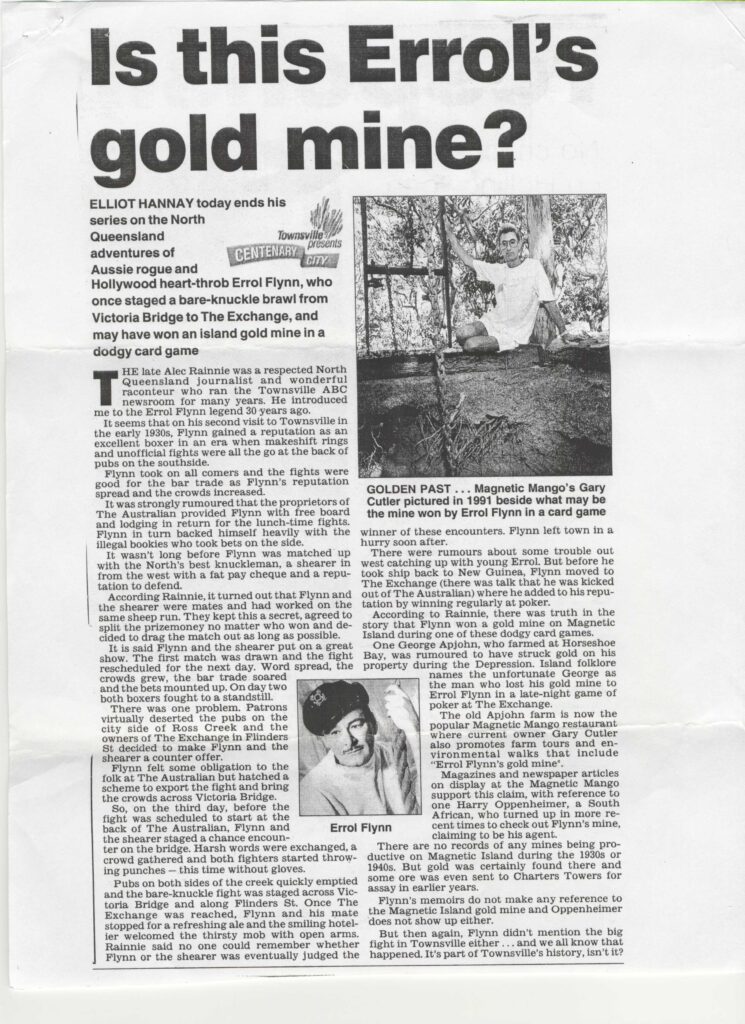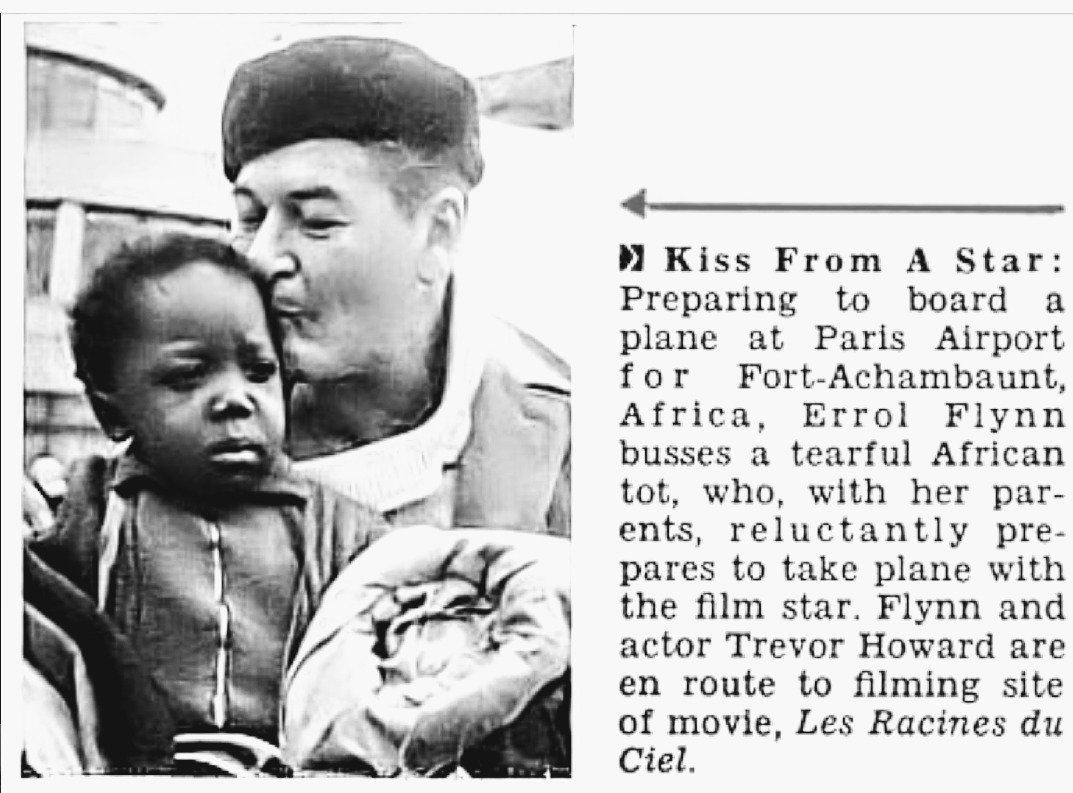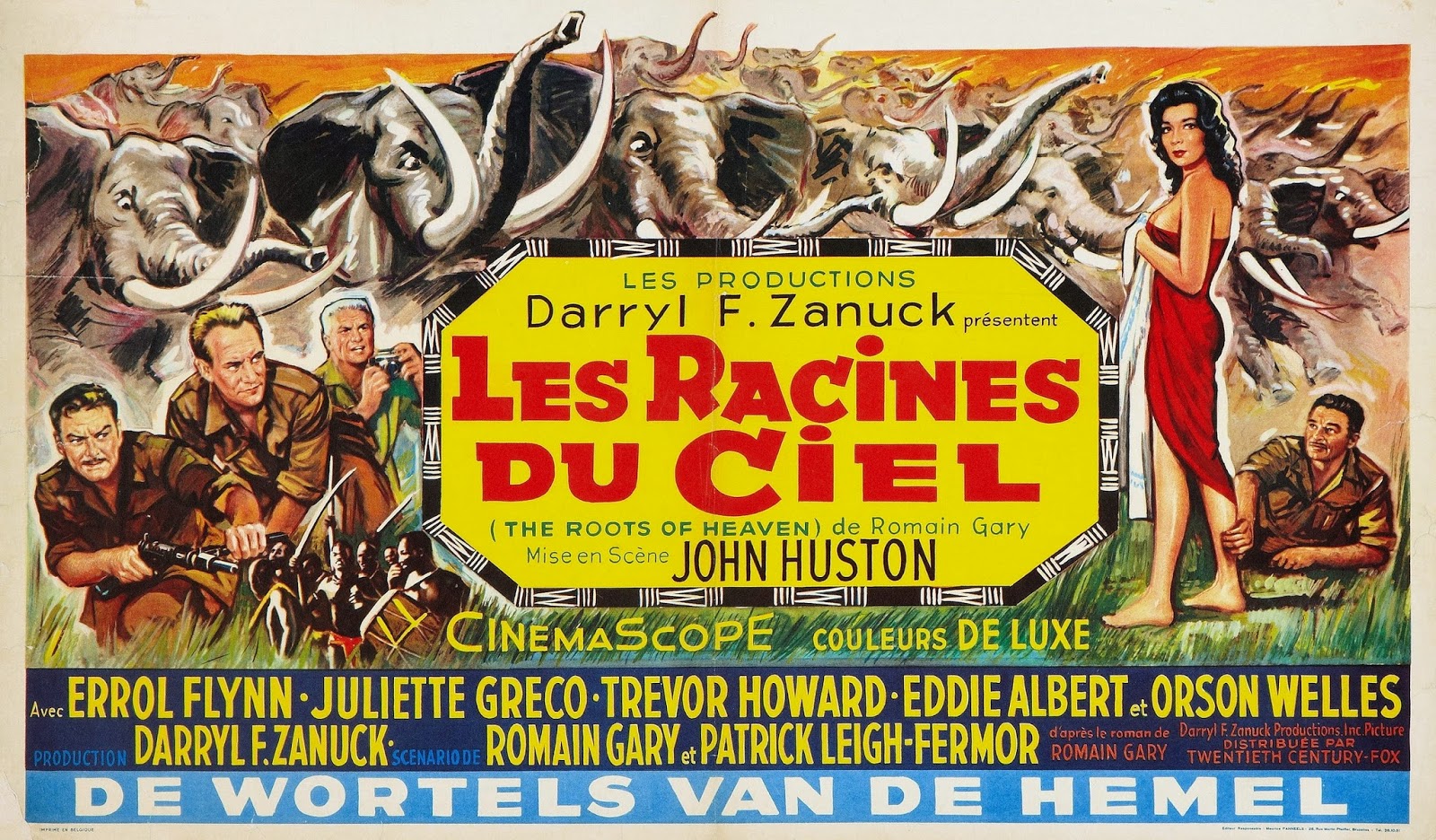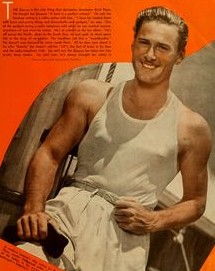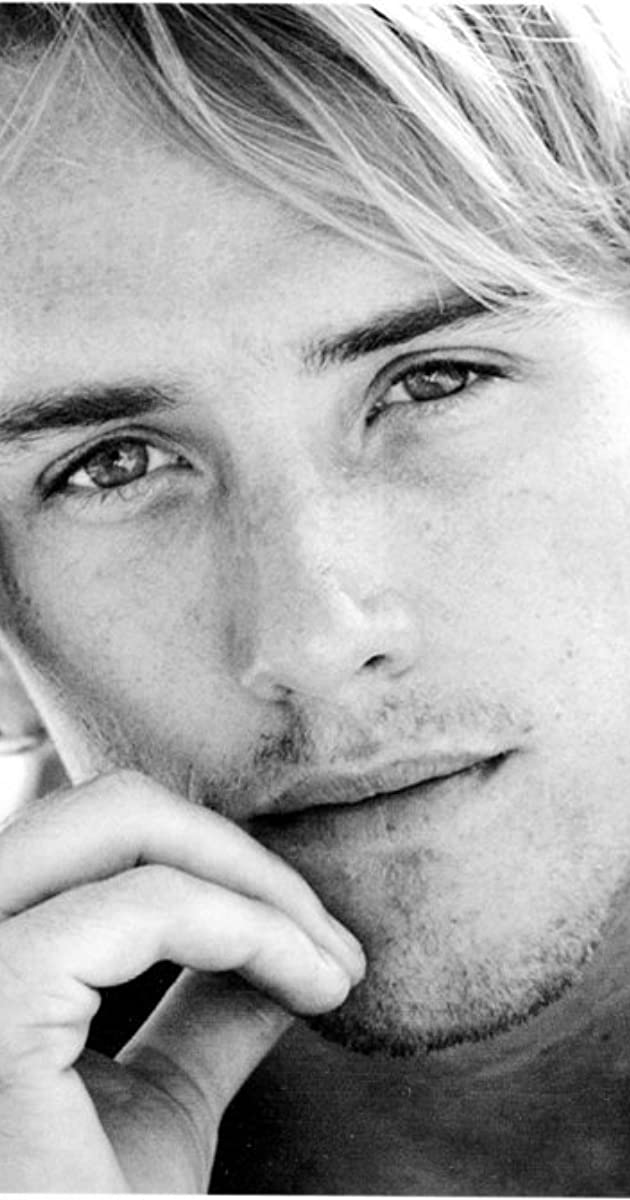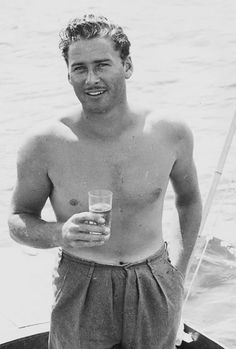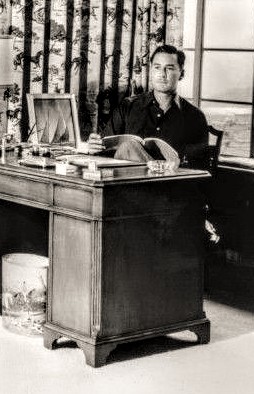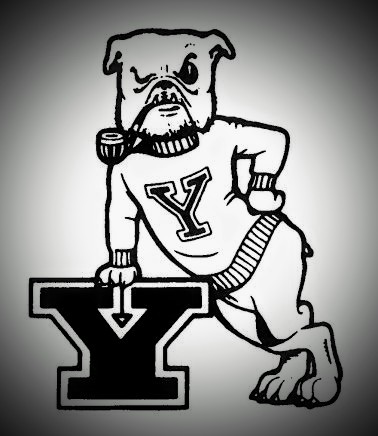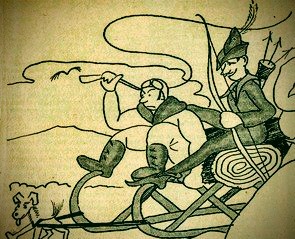— David DeWitt
Archive for the ‘Newspapers & Magazines’ Category
Errol Flynn’s Gold Mine?
“A Real Homebody”? — “Poorer but Happier”?
April 30, 1957
![]()
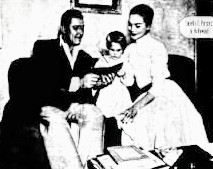

Louella 0. Parsons in Hollywood
International News Service
Louella O. Parsons Motion Picture Editor
After six years abroad Errol and Mrs. Flynn (Patrice Wymore) return to Hollywood with baby Arnella.
He’s a real homebody now.
DASHING, happy-go-lucky, colorful Errol Flynn, who lost millions, is poorer today but happier than he’s ever been in his life. And he didn’t hesitate to say that Patrice Wymore (the present Mrs. Flynn) is responsible. Six months ago, Errol owed $900,000. Today, he has paid off $750,000 and sees his way clear to handing over the remainder by December. This is a changed Errol. No longer does that roving eye of his look at every pretty girl who enters a room. In the past, Errol was as wild, unpredictable and full of pranks as anyone I ever interviewed. He always talked with his tongue in cheek, and while I always liked him, I used to have the feeling that some of his nonsense was due to the fact that life was not happy. He asked me to have dinner with him and Patrice at La Rue. You can always depend upon Errol to say something different and to make an interview an occasion, and his first words to me were: “Well, what do you think of her?” pointing to the calm, gracious Patrice. A little embarrassed with such frankness, I countered with, “What do you think of her yourself?” “Well, she’s not my type, but 1 love her,” he laughed. “You know, she saved my life. I’d have run when the going was so tough, but, Pat, without a word of complaint, helped me straighten out my affairs, stuck by me and gave me encouragement. “I never thought I’d ever say I’d be lonely for any woman,” he continued, “but, do you know something? I can’t bear to be separated from her. She gives me a confidence I all but lost during those months of worry.”
The Flynns have been in Europe for six years. They left Hollywood in 1950, and Errol had considerable trouble with William Tell, the picture he was to make in Italy. He says he lost over $200,000 of his own money in it. Errol said, “To show you the kind of girl Pat is, she was expecting our bambina any hour when I got word that I had to be in New York on business. She said, ‘You go right ahead and I’ll wait until you return to have the baby.’ I got back Christmas Eve to find that she’d invited 30 people for Christmas Day egg nogs. On Christmas I rushed her to the hospital where the baby was born within a few hours. We just left all our guests at the party. “I never thought I’d want to settle down to family life,” Errol went on, “but you should see me now. You know how I never wanted domesticity. Whenever it threatened me I’d go away on my boat or take a picture assignment away from home. We now have the greatest family life you ever saw.
“Since I’ve been back in Hollywood,” he said, “we’ve had Pat’s parents from Kansas, her grandmother, and all the children with us My two little girls, Deirdre and Rory, by my marriage to Nora Haymes, spend every week end with us, and our daughter Arnella loves playing with them.” His fourteen-year-old son, Sean, by his marriage to Lili Damita, is the spittin’ image of Errol. Patrice told me Sean spent a little time with them in Europe. “He is so handsome and so intelligent,” she said. “He’s now in Florida with his mother.” A woman who can praise a previous wife’s child is all right for my money. Usually there is a feeling of resentment, but if Pat has any feeling of this sort she’s a great actress. Errol said, “At Universal-International they gave me some of rry ‘face’ back with a great part in Istanbul. I hope to come back and make another picture for them; it’s a nice studio. I’ll return in December.” “Didn’t you almost turn in at Warner Brothers studio by mistake?” I asked him. He started his career at Warners with Captain Blood [the film which made him] one of the top stars in the country.
Errol is older now and wiser. He has taken off some of the weight which so shocked me when I first saw him after his return here. But he’s still and always will be the same charm boy. When domesticity threatened in the past, he’d be off to other shores.
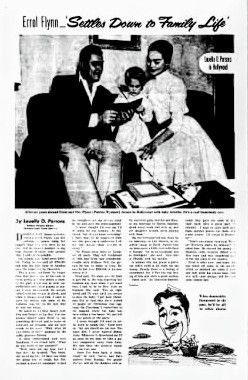
— Tim
“FLYNN FLINGS A PARTY”
As reported in the April 23, 1949, issue of PIX Magazine, shown below, Errol threw a party at Mulholland full of “his filmland friends”. During this A-list event: Errol conducted “white mice races”; Shelley Winters was arrested by a bogus police officer, and a guest was caught and evicted for stealing a revolver. For the record, I find the photos captions rather stupid and insulting. Despite so, the article is valuable because its candid photos capture Flynn with other Hollywood celebrities he was rarely, if ever, photographed with before or after.
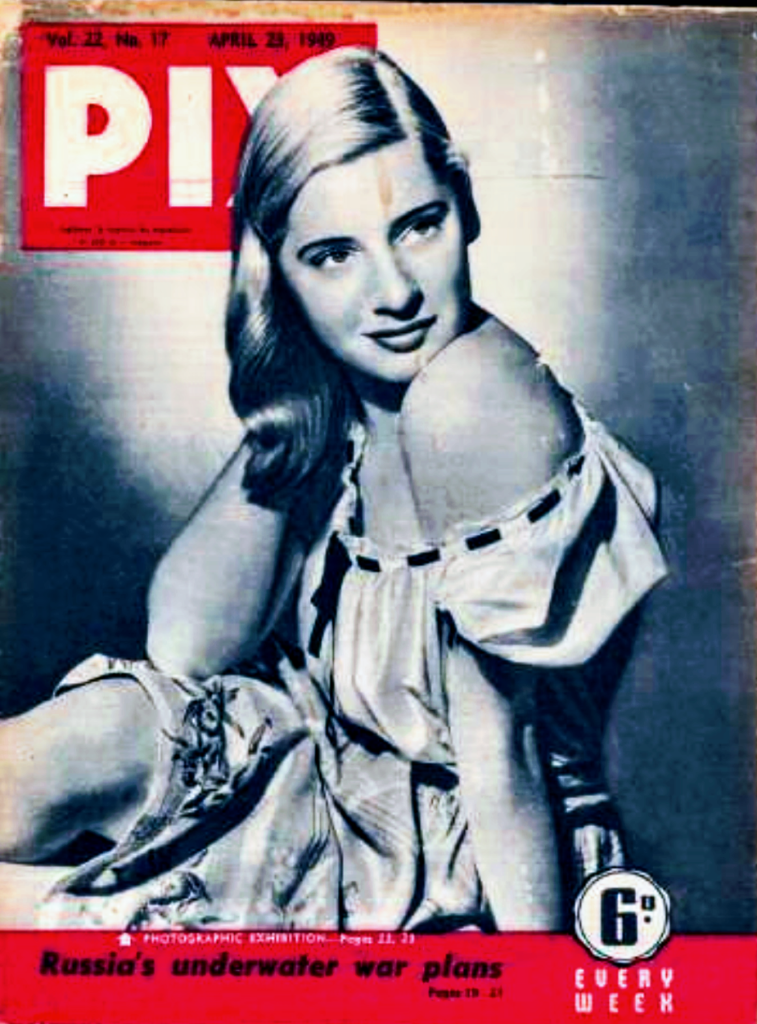
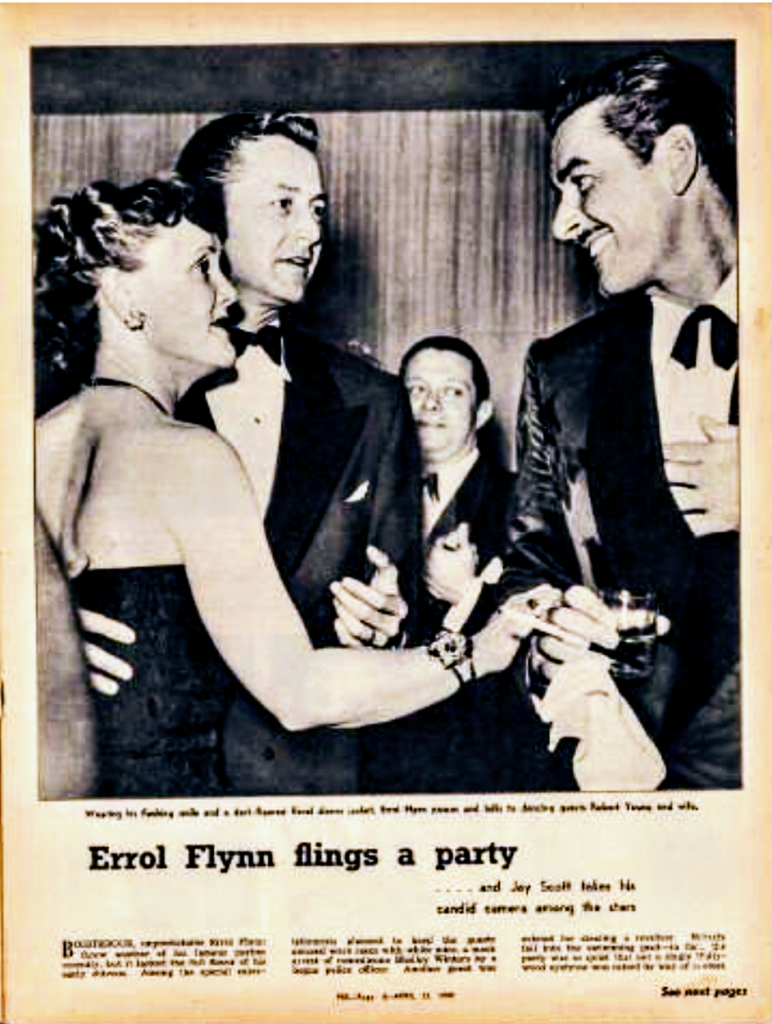
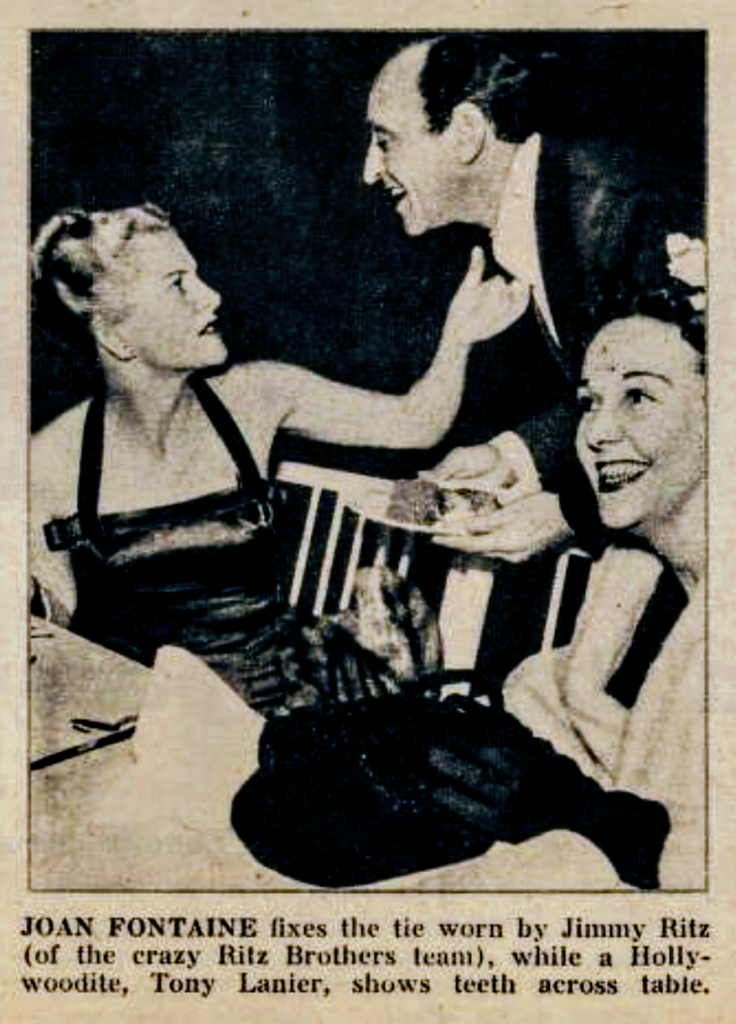
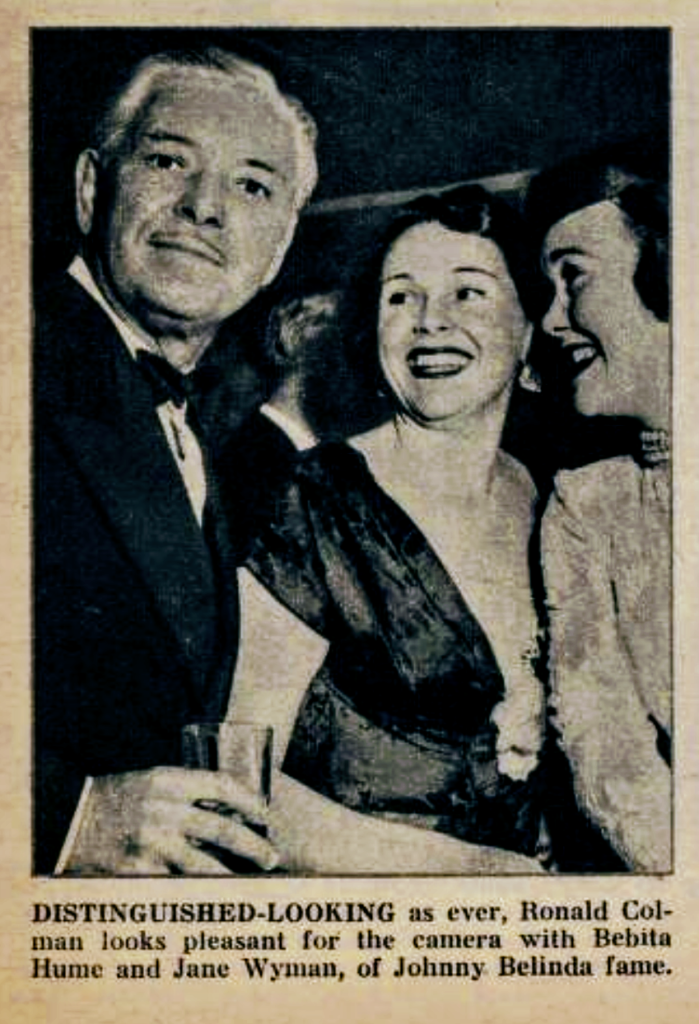
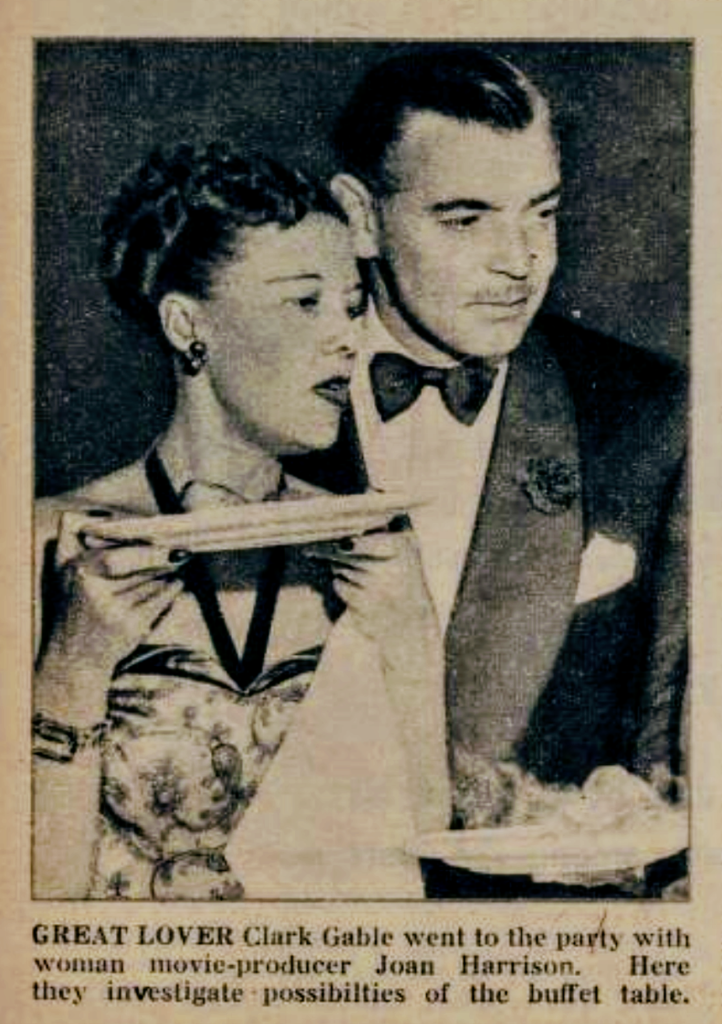
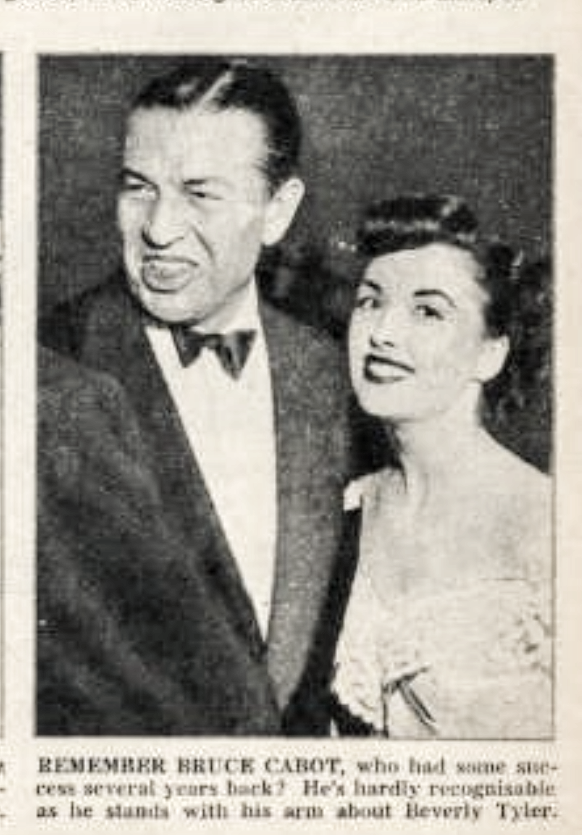
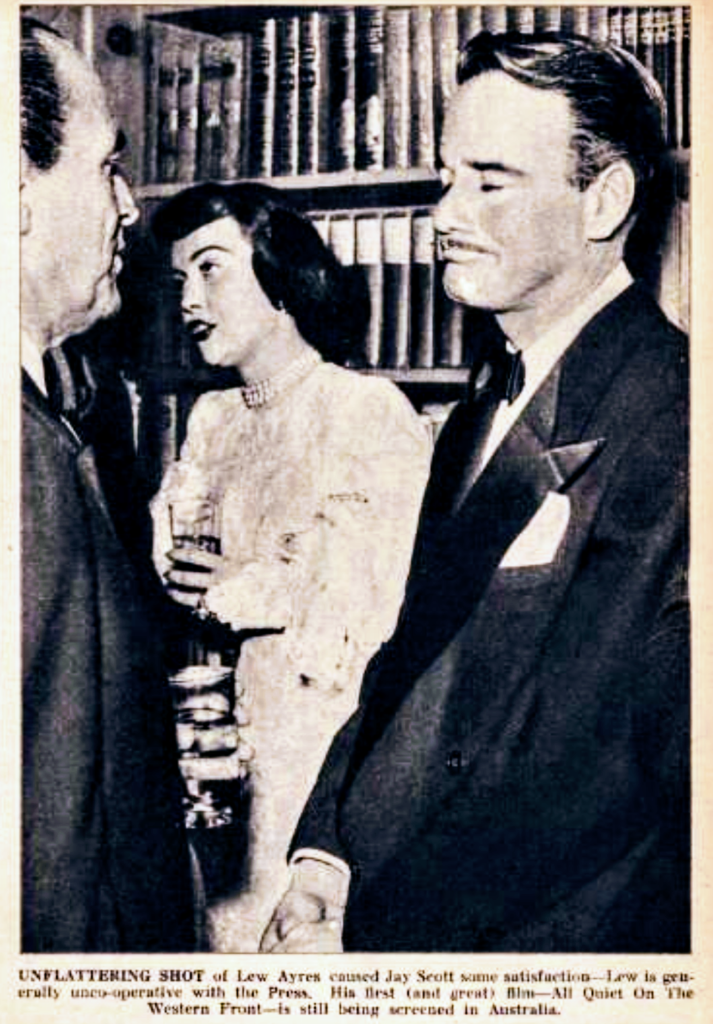
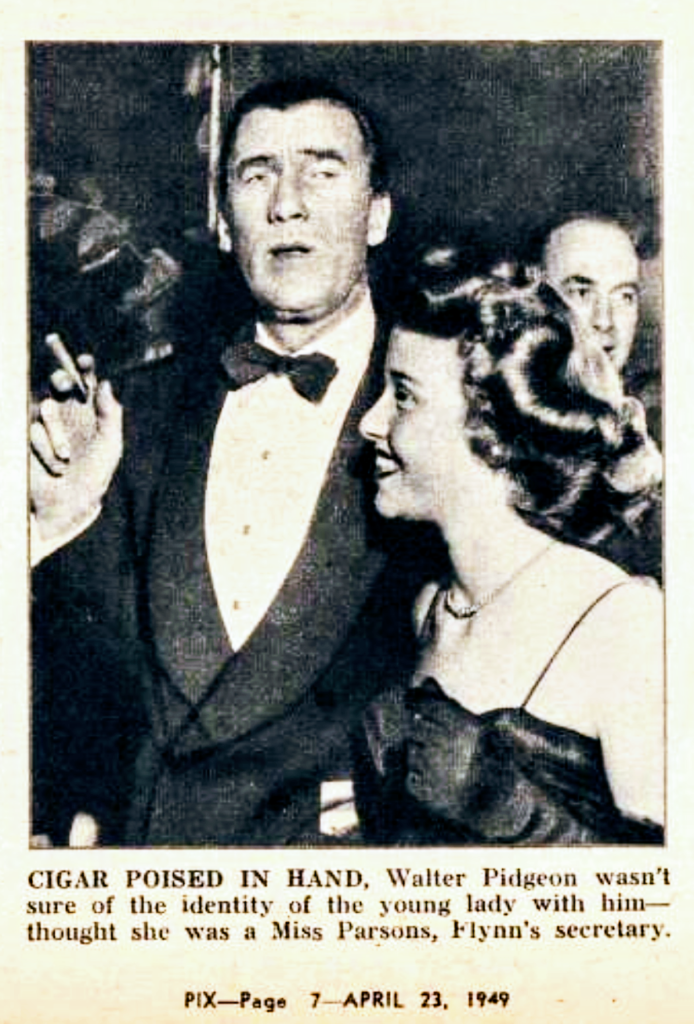
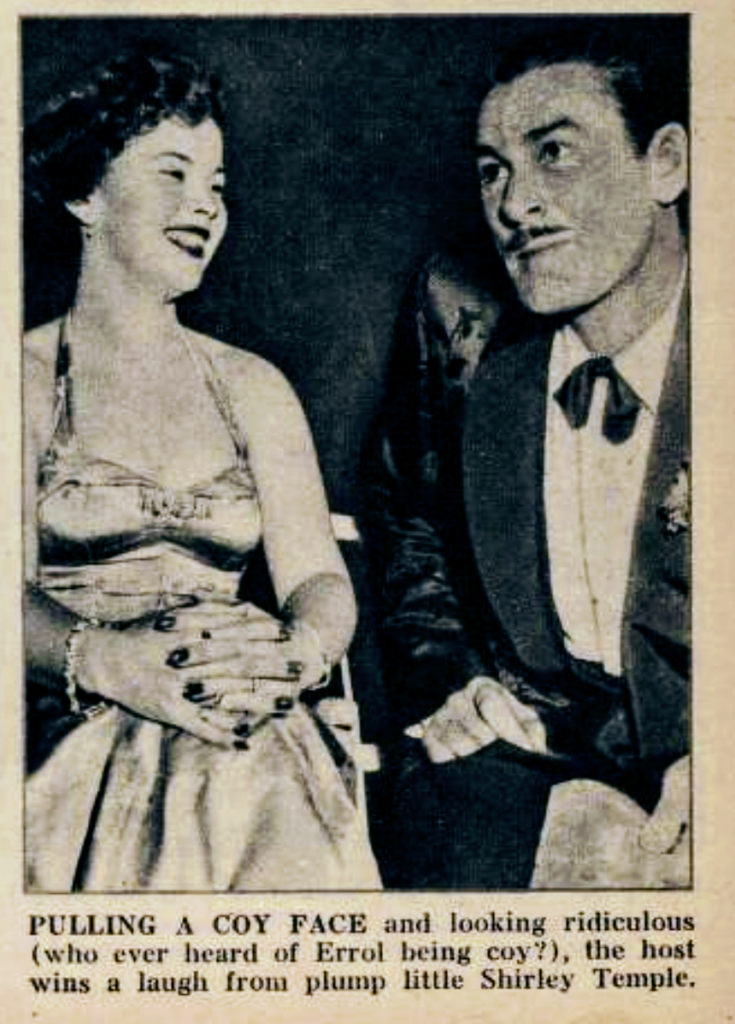
— Tim
Gentleman Flynn
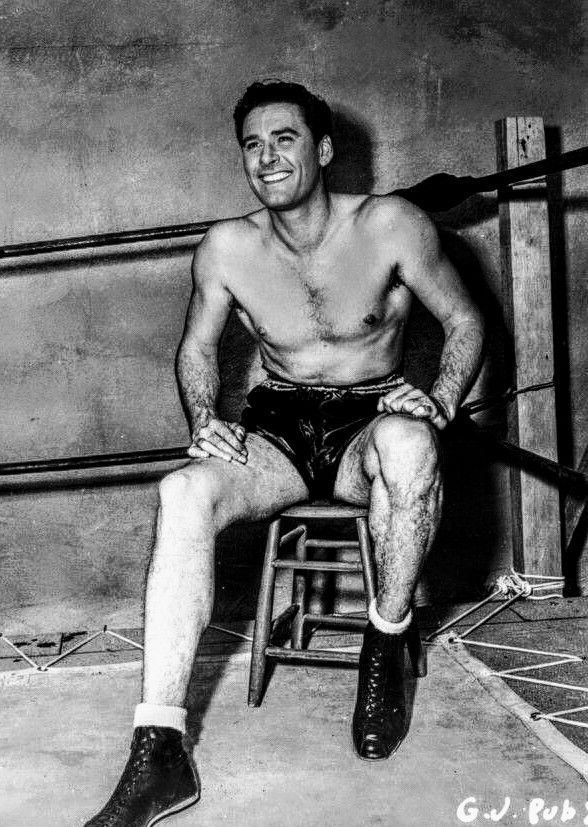
GENTLEMAN FLYNN
THE FRONT ROW
NEW YORKER MAGAZINE | 2011
Transcript of “Richard Brody on Raoul Walsh’s “Gentleman Jim” (See Video in red link above.)
[Gentleman Jim’s manager, Billy Delaney/William Frawley] Hey, what’s the idea Choynski, where’s your boxing gloves?
[Joe Choynski’s Manager] He lost ’em, that’s what he did, He lost ’em
[Referee] Yeah, well he can’t fight with those.
[Billy Delaney] Aw, nix on that. We won’t fight you without regulation gloves.
[Errol/Gentleman Jim] Wait a minute. Wait a minute, Billy. He can use gloves, no gloves, bare knuckles. He can use a baseball bat if he wants. Let’s get started.
[Richard Brody] I’m Richard Brody and this clip is from Gentleman Jim, a 1942 film directed by Raoul Walsh. It’s a biopic about James J. Corbett, a late 19th century boxer who came
from a rough Irish immigrant family in San Francisco, and yet brought a new level of refinement and gentility to the sport of boxing.
[whistling]
It stars Errol Flynn as a young man with an exuberant excessive swagger. He starts out as a bank teller who had cultivated his pugilistic skills through family brawls and hasn’t yet had a chance to put them on public display. At the same time, he has social climbing ambitions and makes use of an unanticipated connection with an heiress to get himself introduced into the Olympic Club. There, he finally gets to show off his skills and become something of a local celebrity.
Walsh takes pleasure in the rough-hewn media
of illegal prize fighting. The movie is filled with a jaunty and exuberant rowdiness.
[John L. Sullivan] I’ll meet any man who will stand on his own two feet, and if you had about 30 pounds more on you, you’d be the first one sir.
[Errol] I’ll return the compliment Mr. Sullivan, if you’d fight me, I’d just wish you were five years younger.
[Sullivan] What do you mean by that?
[Errol]Not much fun winning the championship from a guy who’s practically tripping over his beard.
[Richard Brody] In this scene, Corbett is trying to get himself a match for the heavyweight title
with the great fighter, John L. Sullivan,a harsh, aggressive, somewhat crude Boston man
who was intensely proud and nearing the end of his career and had no intention of fighting the young peacock. ..But Corbett applies his non-boxing skills to find his way into the ring with him.
[Sullivan] Call the newspaper boys in. I’ll fight that blabbermouth anytime, anywhere.
[crowd cheers]
[Richard Brody] There’s something special about the character of Corbett. He seems peculiarly modern, in fact, even more modern than Walsh imagined. Unlike the other boxers he faces,
he isn’t just a brawler, he’s a dancer, he’s a master of fancy footwork. And with his fancy footwork comes high-flowing verbiage, the ability to use taunting to get under his opponent’s skin and, with his confection of his public image and his careful attention to his appearance, Corbett seems nothing less
than a precursor to Mohammad Ali.
[boxing bell rings]
[crowd cheers]
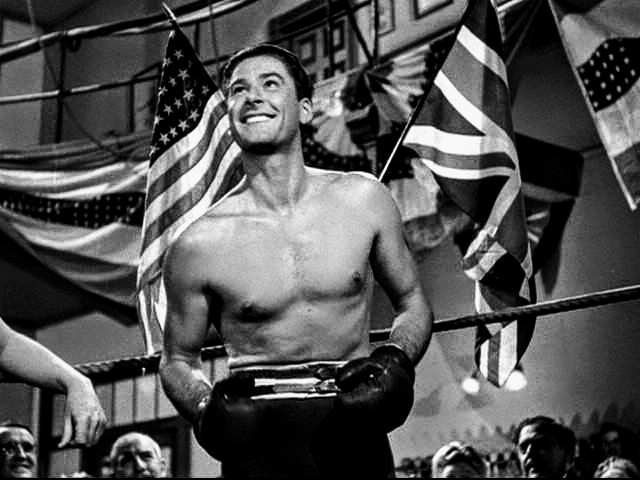
— Tim
Signature Flynn
The New Yorker
April 18, 2005
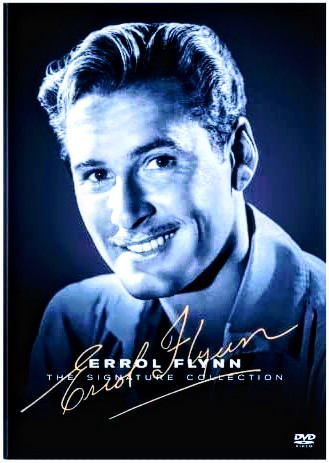
IN LIKE FLYNN
No film star ever bettered Errol Flynn in tights, but he was the soul of insouciance even when he wore a cavalry uniform or bluejeans. That’s the revelation of “Errol Flynn: The Signature Collection” (Warner Home Video), which features the athletic, rakish star not just as an inspired Sir Francis Drake take-off in the vivid “The Sea Hawk” (1940) and as an uncharacteristically stiff Earl of Essex in “The Private Lives of Elizabeth and Essex” (1939) but also as a gallant General George A. Custer in “They Died with Their Boots On” (1941) and as a gritty frontier sheriff in the colorful Western potboiler “Dodge City” (1939). The set includes a surprisingly frank biographical portrait, “The Adventures of Errol Flynn.”
But the key film in the set is the sweeping, ebullient swashbuckler “Captain Blood” (1935). Three years before he became the most dashing Robin Hood yet (in “The Adventures of Robin Hood,” available on a separate Warner DVD), the young Australian actor, in his Hollywood breakthrough, proved his panache at righting wrongs. In this film, based on Rafael Sabatini’s 1922 novel about seventeenth-century pirates of the Caribbean and directed by Michael Curtiz, Flynn is Peter Blood, a peaceful doctor who makes the mistake of treating a rebel during the tumultuous reign of King James II and ends up a slave in Jamaica. The ravishing Olivia de Havilland (Flynn’s frequent co-star) plays the feisty, sympathetic niece of the tyrannical British slave owner; Blood and a barracksful of enslaved rebels (good men all) make their escape by stealing a Spanish ship and becoming buccaneers.
Flynn combined aristocratic dash with rebel flair—in “Captain Blood,” he defies the ruling order with absolute confidence. At one point, de Havilland says, “I believe you’re talking treason.” Flynn replies, “I hope I’m not obscure.” (This exchange has a close echo in “Robin Hood,” when de Havilland exclaims, “You speak treason!” and Flynn responds, “Fluently.”) In his autobiography, “My Wicked, Wicked Ways,” Flynn wrote that “youthful and virile roles” like cowboys and swordsmen “require gusto and genuine interest—such as I had felt at the time I was making ‘Captain Blood’ and ‘Robin Hood.’ ” He’s right: in these movies, his exuberance irradiates the screen.
— Tim
LOOK 🎯 Errol Kissing Olivia
LOOK Magazine – April 12, 1938
The Adventures of Robin Hood
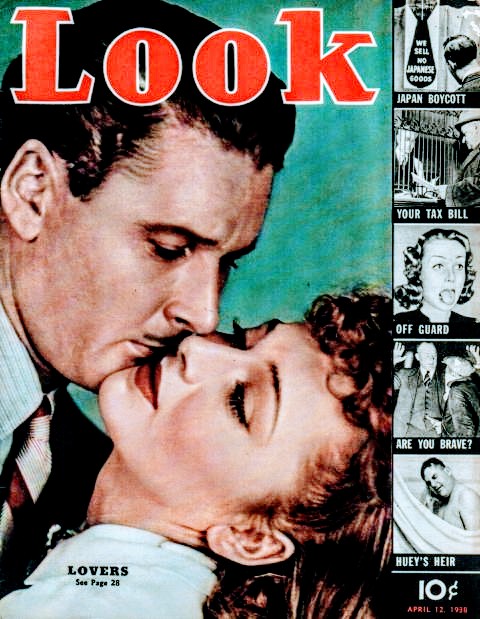
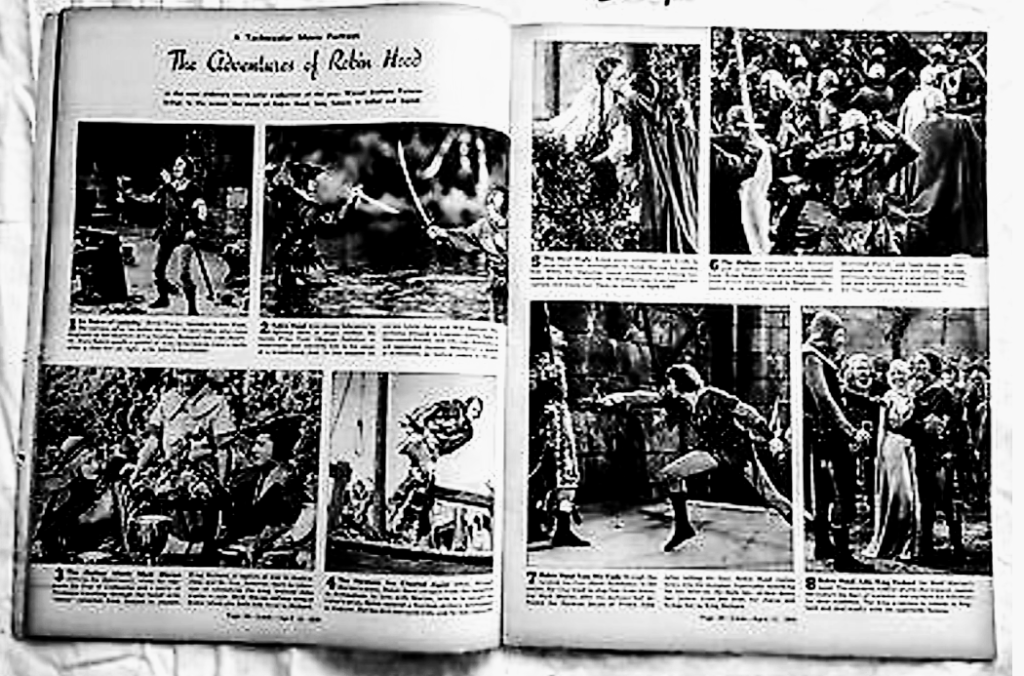
OTHER CONTENTS
– The Rockefeller Women, wives of the John D. Rockefeller clan, the former Blanchette Hooker, Mary Clark and Mary French.
– Blind persons learn how to row at European school for the blind.
– Confidentially column includes Francisca Gall, Yehudi Menuhin, Barbara Huckins, May McAvoy, Will H. Hays, Lora Marlo, Sidney Skolsky, Anthony Averill, Mary Margaret McBride, Henry Morgenthau, Jr., David and Joseph Maddox and two unrelated men named Joseph John Toth.
– Auto driver Wilbur Shaw in an ad for Camel cigarettes.
– Photographic manipulations proved pictures do tell lies, samples by photographers Henry Clay Gipson, Bill Ries, and A.J. Sockoloskie.
– A photo study of who collects taxes and where they go in Peoria, Illinois; carpenter Homer M. Lynn and family buy shoes from Harry Frankel, groceries from John Frasco, discuss taxes with city assessor Dan Goggin. Other businesses include Hiram Walker, Rock Island railroad, Caterpillar Tractor, young Russell Deal at the Pea Ridge School, Marjorie Frye at the Proctor Recreation Center, Tildon Cecil at the relief office.
– A magician saws a woman in half using Horace Goldin’s trick.
– Boycott against Japan.
– Dorothy Wender Heizer of Essex Falls, New Jersey creates the world’s most expensive dolls.
– Passion play in Oberammergau, Germany.
– Is Paulette Goddard your choice for Scarlett O’Hara in “Gone with the Wind”?
– U.S. Navy builds biggest aircraft carrier, the Yorktown, illustration by Logan Reavis.
– The table manners of Mable Tanners.
– The camera trains diver Herta Schieche of Berlin.
– Hollywood off guard, Carole Lombard, Ginger Rogers, Douglas Fairbanks, Jr., Marlene Dietrich, Gary Cooper.
– Climbing the pyramid of Gizeh is a workout.
– Movie tricks, including Henry Fonda.
– The private life of Louisiana’s governor Richard Leche.
– Flash Gordon returns to Earth.
– Bill Klem, the umpire who never made a mistake.
-Girl archers at Long Branch Junior College in California.
– Ruth Law, first woman stunt flyer.
– 60-year-old Grace Logan of Los Angeles is skilled at jujitsu.
— Tim
